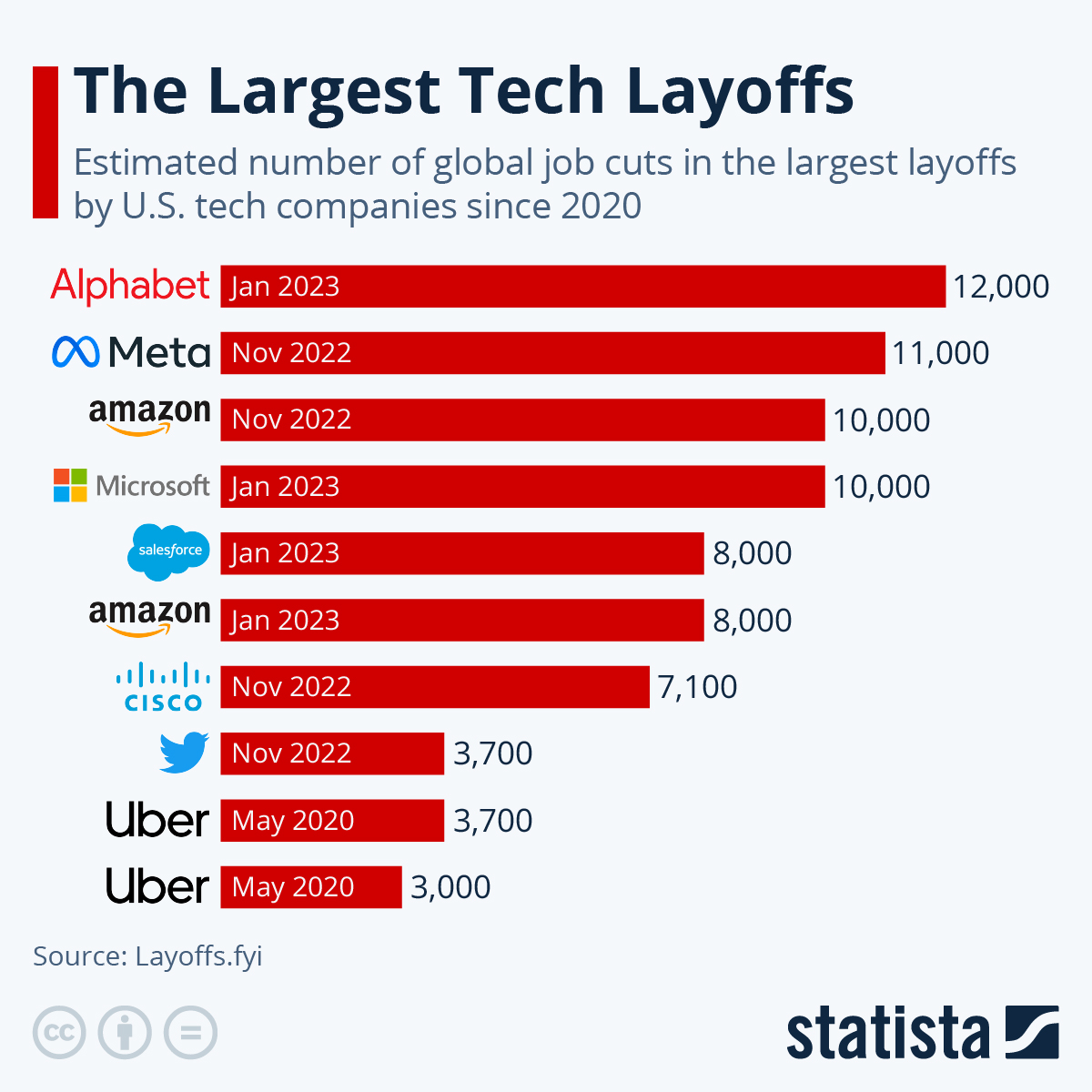
The technology sector has long been a beacon of innovation and economic growth, yet the landscape of 2024 revealed a challenging phase marked by widespread layoffs. As companies recalibrate their strategies to adapt to shifting economic conditions, the wave of job cuts has left professionals and industry watchers pondering the causes and implications for the year ahead. This article explores the factors behind the layoffs of 2024 and offers insights into what 2025 might hold for the tech industry.
Causes of Tech Layoffs in 2024
Economic Uncertainty
A primary driver of layoffs in 2024 was the global economic slowdown. Rising inflation, higher interest rates, and geopolitical tensions created an environment of uncertainty. Higher interest rates made borrowing more expensive, squeezing both companies reliant on external funding and consumers with less disposable income. Many companies, particularly those heavily reliant on venture capital, faced pressure to cut costs and prioritize profitability over growth.Post-Pandemic Overexpansion
During the pandemic, people were forced to stay home and order everything instead of outside shopping that resulted in technology companies experiencing an unprecedented surge in demand for digital tools, e-commerce, and remote work solutions. Many firms expanded aggressively, hiring at record rates to meet this demand. However, as the world returned to a sense of normalcy, the need for these services plateaued, leaving companies overstaffed.Shifts in Consumer Behavior
Consumer preferences continued to evolve in 2024, with a notable decrease in discretionary spending on tech products and services. As economic conditions tightened, businesses in areas such as streaming, gaming, and subscription-based models experienced declining revenues, prompting layoffs.Advancements in Automation and AI
The rapid adoption of artificial intelligence and automation tools began to impact the workforce directly. Tasks that once required human input were increasingly performed by machines, leading to redundancies in roles across various functions, from customer service to software development.Regulatory Pressures
Governments worldwide intensified their scrutiny of big tech companies. Antitrust lawsuits, data privacy regulations, and content moderation requirements added to the operational costs and uncertainties for many firms, pushing them to streamline their workforce.Political unstability
Governments worldwide have suffered from political conflicts. France for example is struggling to form a unified government that can make new laws and obtain majority votes. It has also suffered from large debts and industries shutting down especially the car industry. Canada as well have suffered from bad decisions made by its government.
What to Expect in 2025
As we look ahead to 2025, several trends are likely to shape the trajectory of the tech industry:
Reskilling and Upskilling Initiatives
With automation and AI continuing to redefine job roles, companies are expected to invest heavily in reskilling their workforce. Employees with expertise in AI, machine learning, and data science will be in high demand, while those in repetitive or administrative roles may need to adapt.Focus on Sustainable Growth
Investors and stakeholders are likely to prioritize sustainable and profitable growth over rapid expansion. This shift will encourage companies to adopt leaner operational models and emphasize long-term value creation.Emergence of New Tech Hubs
As remote work becomes more entrenched, emerging markets in Southeast Asia, Africa, and South America could gain prominence as tech talent hubs. Companies may look to diversify their workforce geographically to reduce costs and tap into new talent pools.Increased Regulation
Regulatory oversight is unlikely to ease in 2025. Tech firms will need to navigate a complex web of rules, particularly concerning AI ethics, data security, and competition law. Compliance roles may see a surge in demand as firms strive to align with these evolving standards.Innovation-Driven Recovery
Despite the challenges, 2025 could herald a period of innovation-driven recovery. Breakthroughs in quantum computing, biotechnology, and renewable energy tech may open up new avenues for growth and job creation. Startups focusing on these frontier technologies are expected to attract significant investment.
Navigating the Road Ahead
For tech professionals, adaptability will be key to navigating the shifting landscape. Continuous learning, networking, and staying attuned to industry trends will be essential. Meanwhile, companies that foster a culture of innovation and resilience are more likely to thrive amid uncertainty.
While the layoffs of 2024 have undoubtedly cast a shadow over the tech sector, they also serve as a catalyst for transformation. As the industry recalibrates, 2025 offers the potential for a more balanced and forward-looking approach to growth, innovation, and employment.